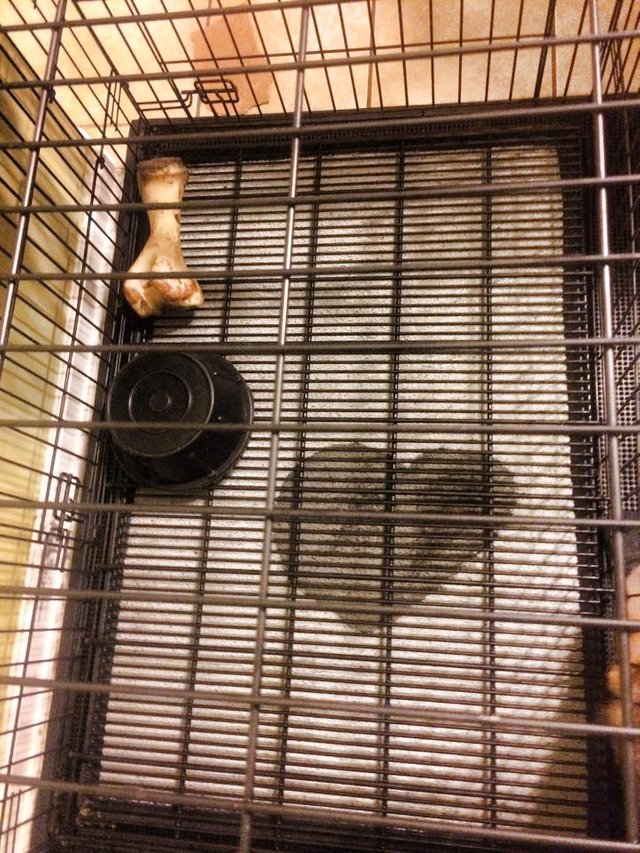Blogs on Dogs: Housebreaking a puppy
Probably the first thing new dog owners struggle is housebreaking their pup, first-time and seasoned dog owners alike. Many people don't know how to housebreak a dog, go about house breaking a dog incorrectly, or are frustrated and upset at repeated accidents in the house.
Here I will explain the process for housebreaking a dog correctly. The first thing that we must get out of the way is the most important lesson that you as the human/handler/owner must burn into your brain and never forgot...
It's Always Your Fault
A dog would naturally go to the bathroom outside if humans were not part of the picture. Dogs are actually quite clean animals and don't want to mess where they live. Furthermore, as the bond between your dog and you grows there is nothing more your dog wants than to please you and nothing more your dog wants to avoid than displeasing you. Often it is the challenge of communication with their dog that dog owner struggle with, and housebreaking is no exception. There are many reasons why you may have problems in the house:
- Your new dog may not understand that outside is the place to use the bathroom.
- They may smell trace amounts of urine or feces in a spot in the house, whether it is there's or not and whether it is fresh or years old, and that serves as an indicator that this is the appropriate place to use the bathroom.
- They may have upset stomach or otherwise medical reason for making the mistake
- They may have continence issues. For example, spay surgery can cause incontinence issues. Don't worry though, it's treatable.
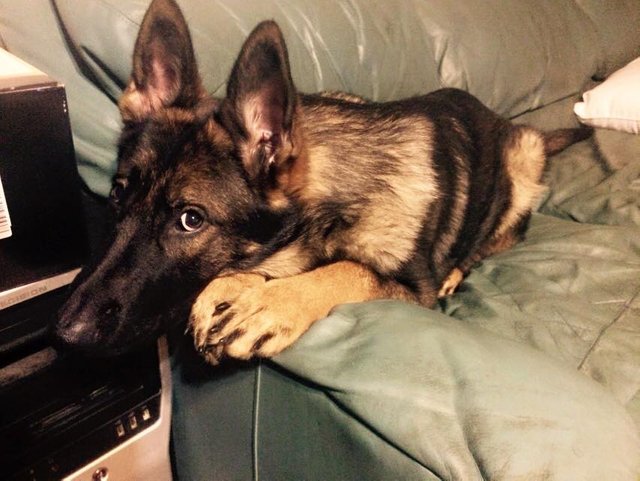
(my own work)
The important thing to remember is that you, as the owner/handler/human, always have the opportunity to prevent it from happening. Therefore you, as the owner/handler/human, are always at fault... never the dog. To punish a dog for going to the bathroom in the house is unfair and more importantly it is confusing to your dog, damaging to your bond, and counter-productive to stopping the accidents.
The Crate
Crate training is the subject of another blog entry. What you need to know about the crate here is the size and its use in house breaking.
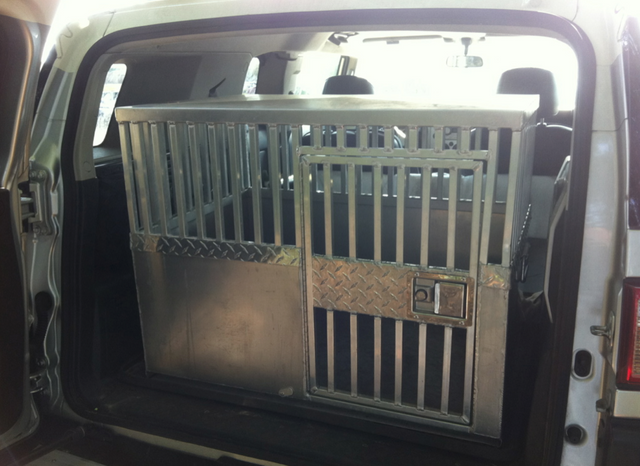
(my own work)
Crate Types
There are many crate types and their pro's and con's are beyond the scope of this blog entry. The important thing is the crate is sized correctly as described below.
Height
The crate should be tall enough for the dog to stand comfortably in without their head hitting the roof. If you have an erect ear'ed dog (German Shepherd Dogs, Huskies, etc) or one where docked ears are the common practice (dobermans, great danes, cane corsos, etc) make sure you allot for ear room.
Length and Width
The crate should be deep and wide enough for the dog to comfortably turn around and no larger. The dog needs to not have too much room in the crate when it comes to housebreaking.
The Process
As mentioned above a dog naturally does not want to wallow in their own filth. It is an inborne instinct. We will harness this instinct in order to communicate with and housebreak your dog. No punishments, no rolled up newspapers, and no noses rubbed in things is required
20 Minute Rule
20 Minutes after eating, after drinking or after waking up, a dog is going to use the bathroom
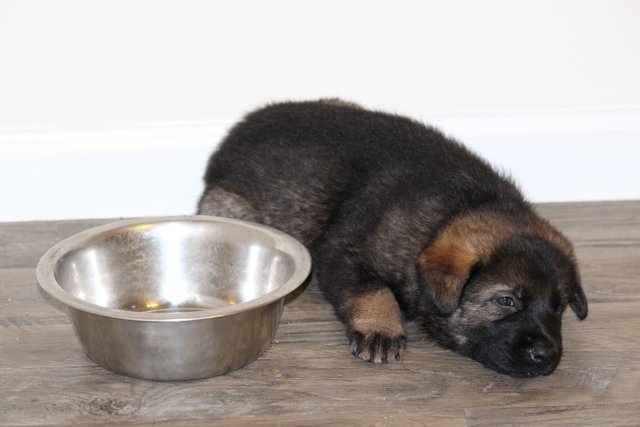
(my own work)
For many reasons beyond housebreaking, you should maintain control of water and food. When you feed a dog put their meal in front of them and they have 20 minutes to eat it. If they haven't finished it, even if they haven't touched it, take the food up till the next meal time. When a puppy eats a meal it triggers the digestive tract to get into gear. About 20 minutes after the meal a puppy will be making a poopy.
Water should be controlled with a non-housebroken dog as well, especially puppies. You need to have water available during and after a meal, particularly if you are giving dry kibble. However it should also be understood that 20 minutes after a puppy drinks a lot of water they will be taking a pee-pee. With young puppies I would advise taking up any access to water about 2 hours before bedtime.
In both the case of water or food you need to put the dog in a correctly sized crate for those 20 minutes post food and drink. How to best get your dog in the crate, and crate training in general, will be the subject of a later post.
After 20 Minutes
Now that your dog has had 20 minutes for the digestive system to work and he or she is in a small enough crate that if a mistake happens the dog cannot escape from the waste, its time to go outside. For young puppies, dogs that are new to housebreaking, or if you have a long way to get outside I prefer to just carry them outside.
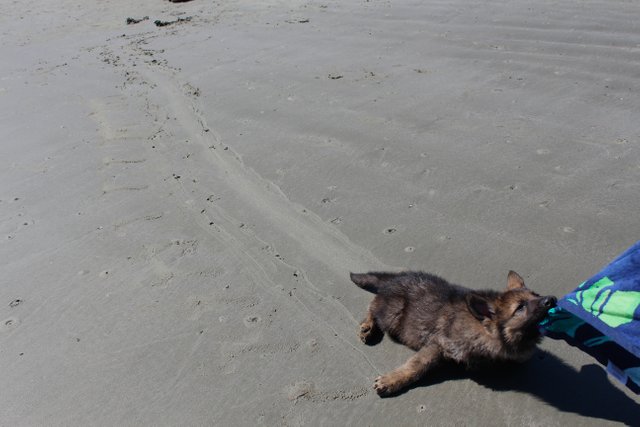
(my own work)
Calmly and quietly get the squirming doody-dancing pup outside. As soon as you put them on the ground they will likely use the bathroom. When they start using the bathroom use a light and happy sounding voice and praise them. "Good outside!" is what I use. Whenever I see one of my dogs use the bathroom outside I say "good outside" whether its my puppy or my 9 year old dog.
If your dog doesn't use the bathroom immediately you either may need to crate them a bit longer to wait out their digestive tract, or you already have a gift in the crate.
Once the dog is done with their business play and praise and make it a party. If the praise overstimulates them and interrupts the bathroom break then tone it down. If they don't respond at all to the praise you may need to increase your enthusiasm or fix your praise (another blog entry can explain how to praise)
Shit Happens.
There are basically two scenarios when accidents happen. You find it after the fact, or you bust them in the act. Remember, either way it is your fault.
When you find it after the fact just clean it up quietly and without anger or cussing, etc. Any anger directed at your dog is counterproductive as your dog won't associate your anger with that mistake.
If you bust them starting or in the middle of the act if you startle them it will often stop the process long enough for you to relocate them somewhere better. Again, no point in punishing them as it is your fault. If it makes you feel better, give them a sullen "nooooooo :-( " to make it clear you don't approve.
Cleaning it up
Its important you get an enzymatic cleaning solution. Dogs re-soil areas where they can detect previous episodes. Normal cleaner does not mask these scents for a dog. Enzymatic cleaners actually break down these materials to prevent re-soiling.
Questions?
Feel free to ask me anything, tell me if you have a problem dog or difficulty, and I'd be happy to help you work through the problem and arrive at a solution.

